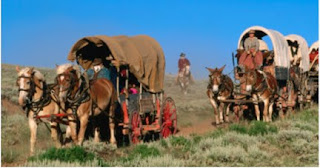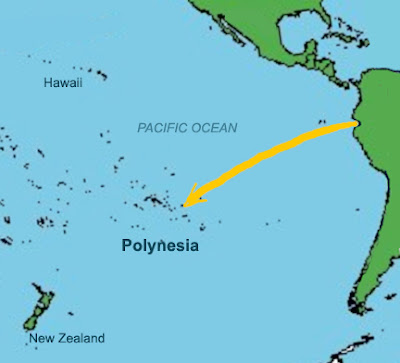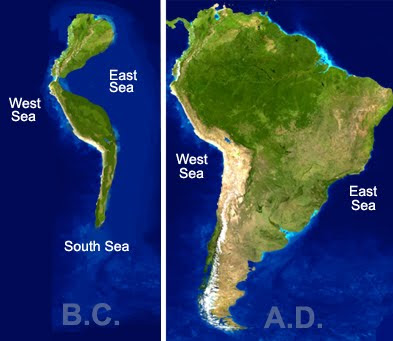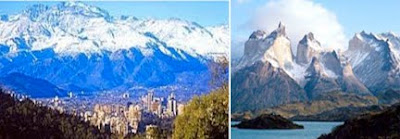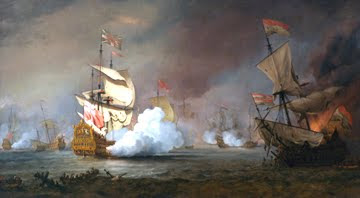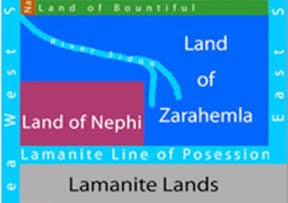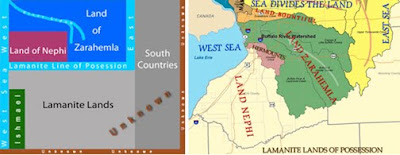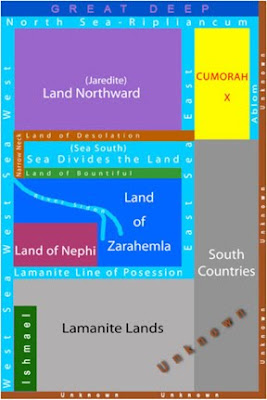6. There are also arguments which explain Book of Mormon passages that speak of north and south seas (Helaman 3:8), the description of the land of Nephi and Zarahemla as nearly surrounded by water (Alma 22:32), and why Nephi compared their land to an “isle of the sea” (2 Nephi 10:20).
Let’s take his comments one at a time:
1. “Explain Book of Mormon passages that speak of north and south seas (Helaman 3:8).”
First of all, this statement in Helaman has reference to a much larger subject, the expansion of the Nephites throughout the Land of Promise. Many people want to narrow the view of this passage to just the Land Northward, however, the scriptural record tells us differently. This begins about ten years earlier when the Nephites, tired of the wars and contentions in the Land Southward, that “in the thirty and seventh year of the reign of the judges, there was a large company of men, even to the amount of five thousand and four hundred men, with their wives and their children, departed out of the land of Zarahemla into the land which was northward” (Alma 63:4). In addition, some went by land “And it came to pass that in this year there were many people who went forth into the land northward. And thus ended the thirty and eighth year” (Alma 63:9).
 Evidently, this migration continued, for ten years later, we see: “In the forty and sixth year, yea, there was much contention and many dissensions; in the which there were an exceedingly great many who departed out of the land of Zarahemla, and went forth unto the land northward to inherit the land” (Helaman 3:3). They traveled “to an exceedingly great distance, insomuch that they came to large bodies of water and many rivers” (Helaman 3:4), and “Spread forth into all parts of the land, into whatever parts it had not been rendered desolate and without timber” (Helaman 3:5), and finally, to the verse in question: “And it came to pass that they did multiply and spread, and did go forth from the land southward to the land northward, and did spread insomuch that they began to cover the face of the whole earth, from the sea south to the sea north, from the sea west to the sea east (Helaman 3:8).
Evidently, this migration continued, for ten years later, we see: “In the forty and sixth year, yea, there was much contention and many dissensions; in the which there were an exceedingly great many who departed out of the land of Zarahemla, and went forth unto the land northward to inherit the land” (Helaman 3:3). They traveled “to an exceedingly great distance, insomuch that they came to large bodies of water and many rivers” (Helaman 3:4), and “Spread forth into all parts of the land, into whatever parts it had not been rendered desolate and without timber” (Helaman 3:5), and finally, to the verse in question: “And it came to pass that they did multiply and spread, and did go forth from the land southward to the land northward, and did spread insomuch that they began to cover the face of the whole earth, from the sea south to the sea north, from the sea west to the sea east (Helaman 3:8). Note the term “And they did go forth from the land southward to the land northward,” that is, Mormon is telling us that the entire Land of Promise, from the Land Southward to the Land Northward is involved in the following statement: “And did spread insomuch that they began to cover the face of the whole earth,” that is, the entire face of the Land of Promise was covered with people involved until they spread “from the sea south to the sea north, from the sea west to the sea east.”
There is no further explanation necessary regarding the South Sea. They were on an island—the island was completely surrounded by water—and in every direction there was a sea, called the “Sea North,” “Sea South,” “Sea East,” and “Sea West.”
2. “The description of the land of Nephi and Zarahemla as nearly surrounded by water (Alma 22:32).”
The entire Land of Promise was surrounded by water—it was an island (2 Npehi 10:20). On the other hand, at the time in Alma that Mormon is describing the land, he is referring mostly to the Land Southward where the Nephites had contained the Lamanites to the lands southward of them. Thus, he is describing the Land of Nephi in great detail, and the Land of Zarahemla in some detail. These are the lands he describes when talking of the small or narrow neck of land. These lands, the Land of Nephi and the Land of Zarahemla, were the point of his writing about the water. They were surrounded by water except for the small neck of land.
However, Sorenson has to discredit this statement because his Mesoamerica model is not surrounded by water.
(See the next post, “Do We Know Where the Land of Promise is Located-Part X,” for more comments on the website quoted above and an understanding of Mormon’s Map)


